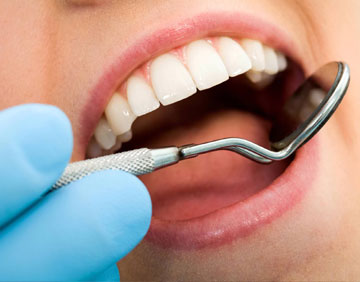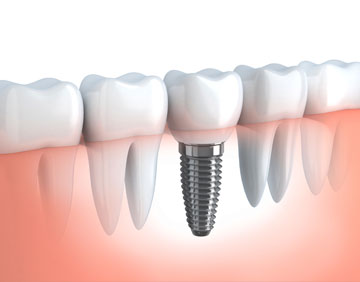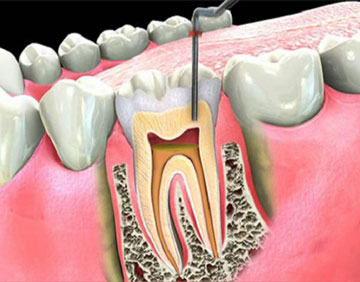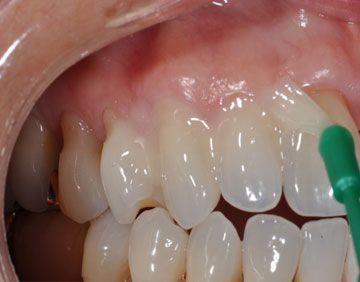Tooth whitening (termed tooth bleaching when utilizing bleach), is
Treatments
1. Tooth Whitening

Tooth whitening (termed tooth bleaching when utilizing bleach), is either restoration of natural tooth shade or whitening beyond natural tooth shade, depending on the definition used.
Restoration of the underlying, natural tooth shade is possible by simply removing surface (extrinsic) stains (e.g. from tea, coffee, red wine and tobacco) and calculus (tartar). This is achieved by having the teeth cleaned by a dental professional (commonly termed "scale and polish".
2. Dental Examination

The dental exam is an essential exercise to maintain your oral health. The exam consists, in part, that the dentist will look at inside your mouth. Our dentists look in your mouth to see things that can Impact on your oral health - and your overall health. These are often things you can not see yourself, But which our dentists managed to detect. We look for:
-
Damaged, absent or decayed teeth
-
Early signs of caries
-
The condition of your gums
-
The position of your teeth
3. Gum Diseases Treatments

A dental restoration or dental filling is a dental restorative material
3. Gum Diseases Treatments

Given that early gum disease is difficult to detect, We can have a problem without knowing it. Therefore, at each recall, Your dentist examines your gums for symptoms of infection. At the onset of the disease, the best treatment is:
-
Cleaning by your hygienist who will remove the accumulation of tartar
-
Brushing the teeth twice a day to remove the plaque
-
Use flossing once a day to remove the plaque.
4. Invisalign

Before we can establish a treatment plan, we will take An impression of your teeth in order to check if they can be Aligned with the Invisalign system. After confirmation, a treatment plan Is developed, our 3D treatment plan allows to visualize the series of movements that will make your teeth during the treatment - So you can see the appearance of your teeth at the end of your Invisalign treatment before you even begin it.
5. Crowns And Bridges

A crown is a hollow artificial tooth used to cover a damaged or decayed tooth. The crown restores the tooth and protects it from further damage. Crowns can also be used to cover discolored or deformed teeth. The appearance and function of a tooth covered with a crown are very similar to those of a natural tooth. The bridge, also called "fixed bridge" or "fixed dental prosthesis" is a dental restoration that replaces one or more missing teeth. It is usually formed of an artificial tooth fixed between 2 crowns and extends from one end to the other of the edentulous zone. The bridge is firmly Held in place by your teeth on either side of the missing teeth (s) or by dental implants. It is permanently attached and can not be removed.
6. Implants

There are several solutions to replace one or more missing teeth. One of these is to use implants In place of partial or complete bridges or prostheses. Comfortable and natural looking, The implants serve to replace the missing roots and to keep the artificial teeth of replacement. A dental implant is an artificial root made of metal (titanium) that is inserted into the jaw to replace The root of a natural tooth. An artificial replacement tooth is then attached to the implant, which serves as a pillar to hold the tooth in place.
7. Single Visit Root Canal Treatment

When the nerve of your tooth is infected, a successful canal treatment allows you To retain your tooth rather than having to extract it. By keeping your natural tooth, you prevent other teeth from losing Their alignment and causing problems to the jawbone. You also avoid having it replaced by an artificial tooth. It involves removing the infected, damaged or dead pulp from the tooth.
8. Extractions

Normally, a tooth lasts a lifetime. Especially if one makes sure to have excellent oral hygiene. But unfortunately, it can happen that a tooth becomes fragile and it becomes impossible for the dentist to save it. Here are the main reasons for tooth removal:
-
Cracked or fractured tooth due to accident or fall
- A tooth of wisdom that hurts
- During orthodontic treatment
- A tooth with a significant deformity (often due to gum disease)
- A milk tooth that does not fall and leaves no room for permanent teeth
9. Fluoridation Treatment

Fluoride is added into our toothpaste and our water supply due to its
9. Fluoridation Treatment

Fluoride is added into our toothpaste and our water supply due to its known properties to protect our teeth from decay. By binding to the tooth surface, it reinforce the tooth structure after the acid on our mouth modifies them. Fluoride is also known to certain extend, can interrupt the bacteria’s system and disrupt them from functioning properly. So, fluoride has been working so hard in our mouth to protect our pearls.